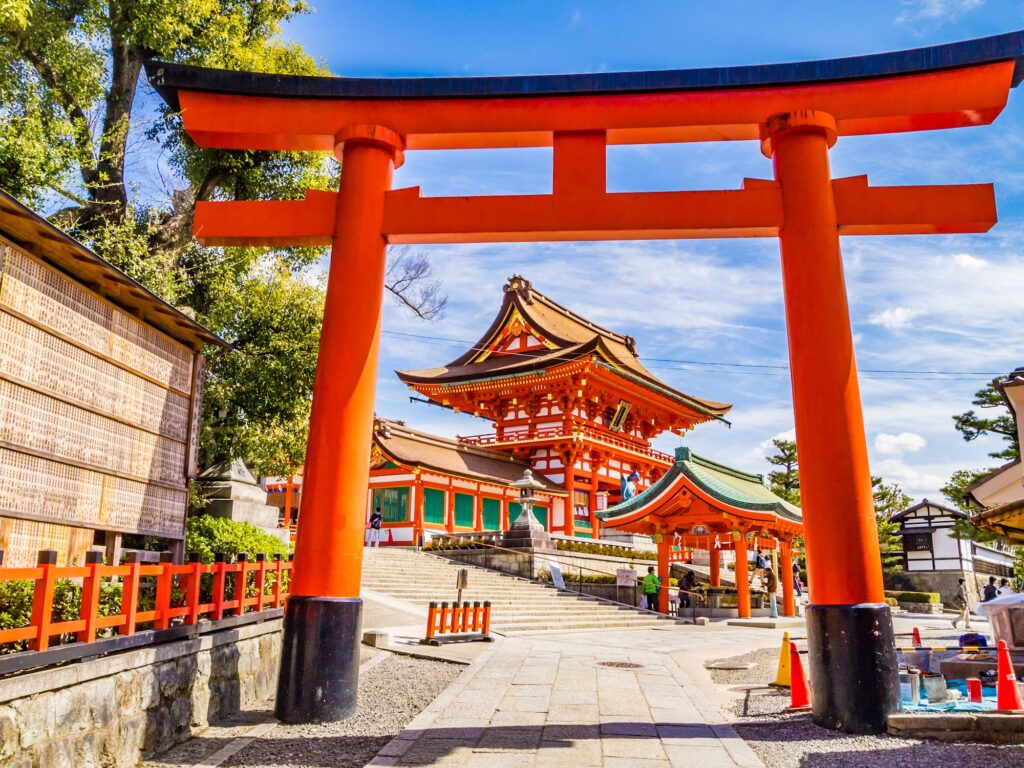Top tips for exploring Japan’s shrines and temples

With spring being the peak season for Japanese travel and online searches for ‘Fushimi Inari Shrine’ up 140%, interest in sacred sites is soaring. However, recent incidents, from damage at Tokyo’s Meiji Shrine to excessive bell-ringing at Kyoto’s Yasaka Shrine, have led to stricter rules to protect their cultural and spiritual significance.
To help travellers make the most of their visit, experts at JR Pass have shared essential tips for exploring Japan’s shrines and temples.
Haroun Khan, founder and owner of JR Pass comments: “We may be biased, but Japan’s temples and shrines offer one of the most serene experiences in the world, blending history, spirituality, and nature. From Todai-ji’s Great Buddha to the ‘floating’ torii of Itsukushima Shrine, these sites are rich in tradition and all have a unique story to tell. Visitors can admire intricate wooden architecture, stroll through Zen gardens, and even encounter Nara’s sacred deer. And if you’re looking for a special keepsake, omamori amulets provide blessings for health, love, success, or protection.”
Top shrines/temple recommendations
Fushimi Inari Taisha, with 39,000 global monthly online searches, is a mesmerizing Shinto shrine nestled at the base of Mount Inari in Kyoto. Renowned for its striking path of over 1,000 vibrant red torii gates that wind up the mountainside, the shrine is dedicated to Inari, the revered deity of rice and prosperity. The temple exudes a tranquil yet powerful aura. For the best experience, visit in the early morning or late evening, when soft light filters through the gates and the crowds have cleared.
Sensoji, Tokyo’s oldest temple, attracts 12,000 global monthly searches and stands as a stunning tribute to Japan’s rich cultural heritage. Located in the vibrant Asakusa district, this Buddhist temple is dedicated to Kannon, the goddess of mercy, and is famous for its dramatic Kaminarimon (Thunder Gate), adorned with a giant red lantern. Beyond the bustling Nakamise shopping street lies the temple’s grand main hall and five-story pagoda. For a peaceful experience, visit at dawn or enjoy the temple beautifully illuminated at night.
Kinkakuji, or the Golden Pavilion, boasts 32,000 global monthly searches and is a breathtaking Zen temple in Kyoto. Its gold leaf-covered walls gleam, reflecting elegantly in the tranquil pond that surrounds it. Originally built as a shogun’s retirement villa, it is now a symbol of harmony and refined beauty, nestled amid meticulously landscaped gardens. Each season brings a unique charm, from the lush greenery of summer to the snow-dusted serenity of winter. For the best experience, visit early in the morning to fully savour the peaceful ambience and the stunning interplay of light on the temple.
Shinto vs. Buddhism: Understanding Japan’s Sacred Traditions
Japan’s spiritual heritage is shaped by two main traditions: Shintoism and Buddhism, each offering a unique glimpse into the country’s rich culture. Shinto shrines (jinja), easily recognised by their iconic torii gates, are dedicated to kami; sacred spirits linked to nature, prosperity, and protection. Buddhist temples (tera), on the other hand, serve as places of meditation and worship, often home to towering statues of deities like the Great Buddha. It’s important to know the difference between the two, as it will add depth to your visit, helping you appreciate these sacred sites’ rituals, architecture, and spiritual significance.
What to expect when visiting shrines/temples
Many temples, like Todai-ji in Nara, are home to the towering Great Buddha statue. Iconic shrines such as Itsukushima Shrine on Miyajima Island are famous for their “floating” torii gate. Both offer a serene escape from Japan’s bustling cities.
Expect intricate wooden architecture with ornate carvings, serene Zen gardens for meditation, and wild deer roaming freely in places like Nara, seen as sacred messengers of the gods. Visitors can buy omamori (amulets) from shrine stalls for blessings like health, love, success, or protection, making for meaningful keepsakes.
Visitors can also participate in traditions by purchasing omamori (amulets) from shrine stalls, each designed to provide specific blessings.
Haroun Khan, founder and owner of JR Pass comments, “We may be biased, but Japan’s temples and shrines offer one of the most serene experiences in the world, blending history, spirituality, and nature. From Todai-ji’s Great Buddha to the ‘floating’ torii of Itsukushima Shrine, these sites are rich in tradition and all have a unique story to tell. Visitors can admire intricate wooden architecture, stroll through Zen gardens, and even encounter Nara’s sacred deer. And if you’re looking for a special keepsake, omamori amulets provide blessings for health, love, success, or protection.”
How to Respectfully Participate in Rituals
Before entering a shrine or temple, visitors should stop at the purification fountain (Chōzuya) to cleanse themselves. Using a ladle, pour water over your left hand, then your right, and rinse your mouth, spitting discreetly before cleaning the ladle handle. Just remember to pour the water into your hand rather than drinking directly from the ladle.
When offering a prayer, the ritual differs slightly between shrines and temples. At shrines, bow twice, clap twice, and bow once more before praying. At temples, a simple bow and silent reflection are customary. Before praying, it’s traditional to toss a small coin into the offering box.
Many visitors choose to leave a wish behind by writing on an ema, a small wooden plaque available at shrine stores, and hanging it on a rack. Wishes can range from health and success to personal goals.
Lighting incense (senko) is another common practice at temples. Visitors can purchase incense sticks, light them, and let them burn briefly as an offering before prayer, adding to the tranquil and sacred atmosphere.
Haroun Khan at Japan Rail Pass provides insight on what to bear in mind when visiting Japan’s shrines and temples: “Taking part in shrine and temple rituals is a great way to connect with Japan’s spiritual traditions. Before entering, stop by the purification fountain to cleanse your hands and mouth.When offering a prayer, follow the correct etiquette—at shrines, bow twice, clap twice, then bow once more, while temples encourage quiet reflection. Writing wishes on ema plaques or lighting incense at temples are also common practices, each carrying deep cultural significance. Observing these customs with respect enhances the experience and shows appreciation for Japan’s sacred spaces.”


Comments are closed.